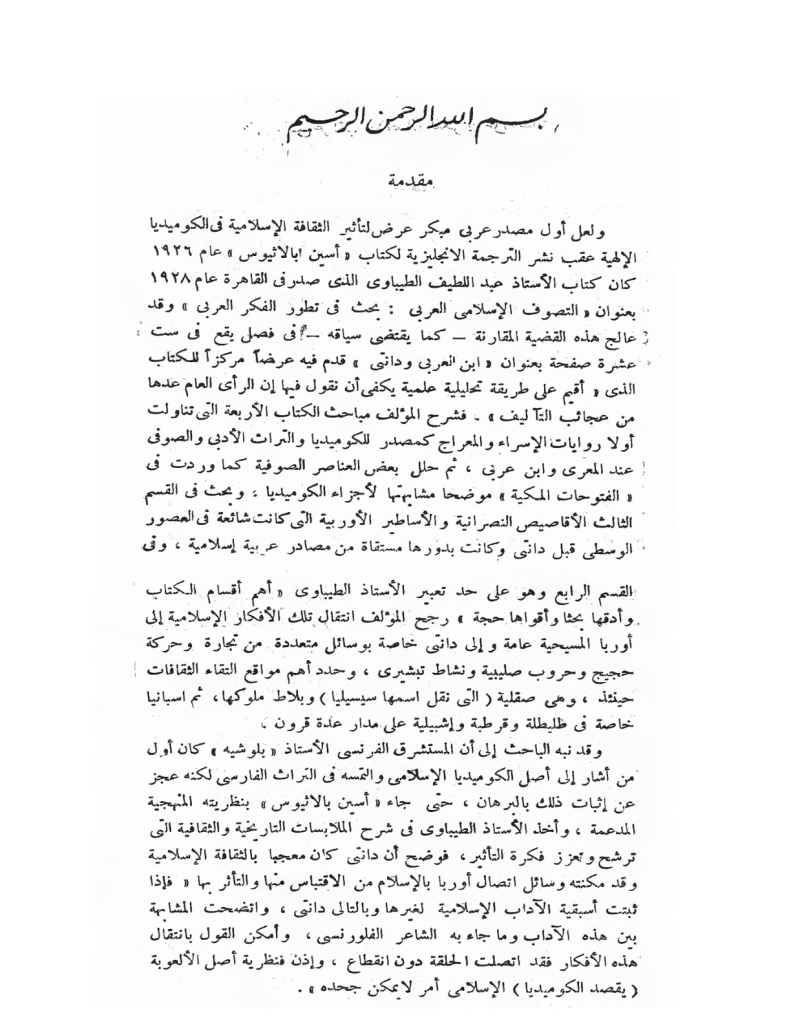

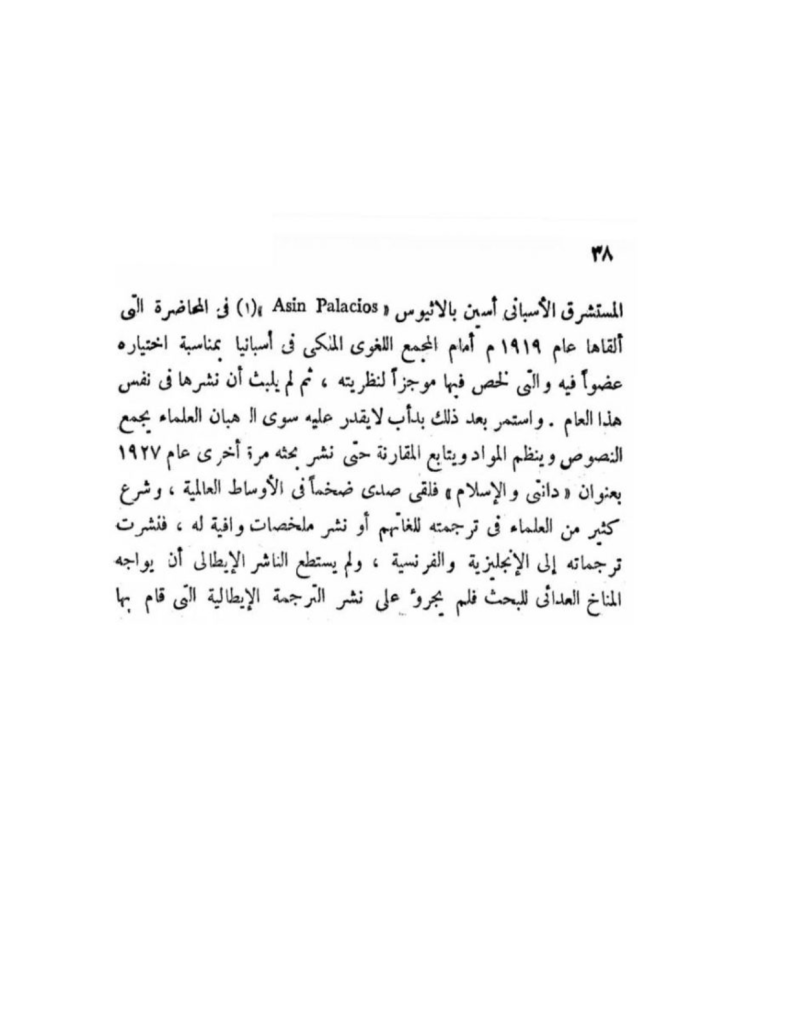

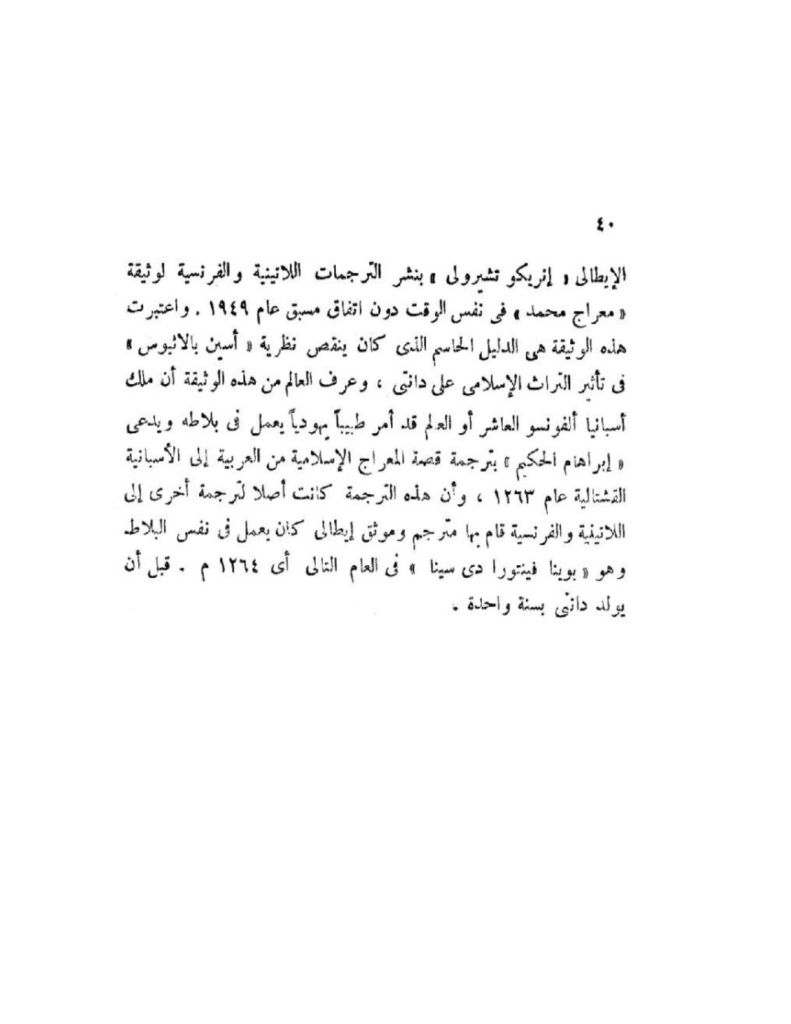
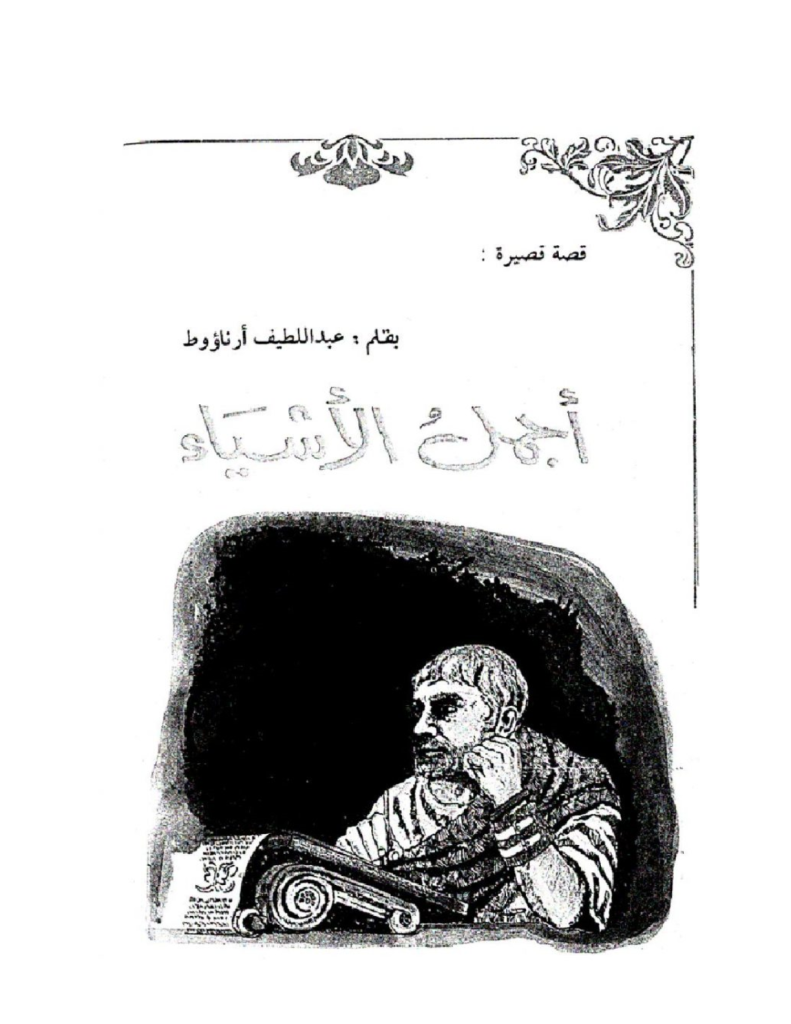
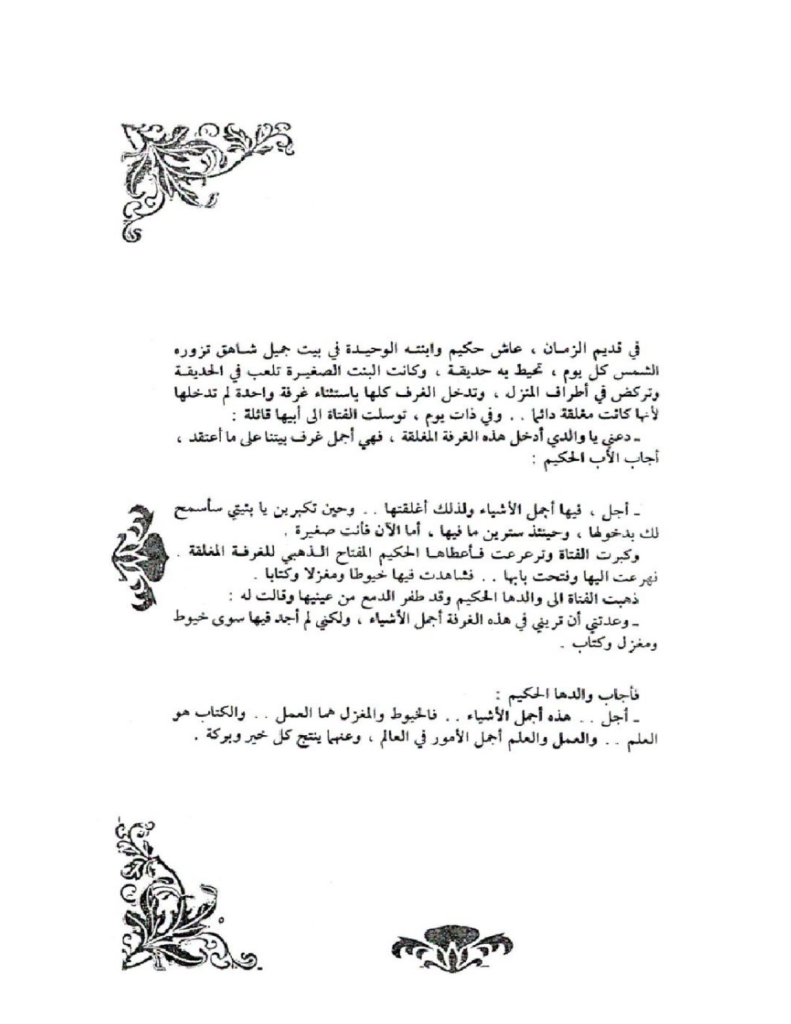

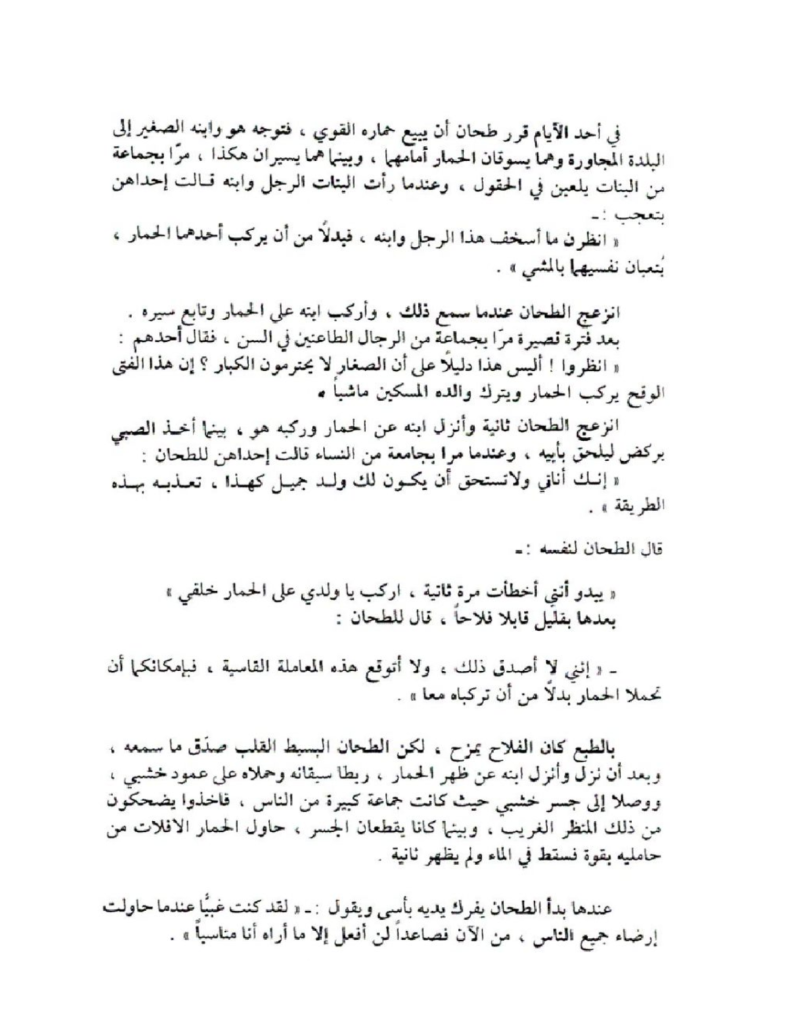
GRAMMAR NOTE 1 . الخصائص النحوية للفعل:فاعله ومفعوله ‘Syntactic properties of verbs: Types of Subjects and Objects’.
In earlier lessons we discussed the semantic properties of verbs and how the semantic class of verbs affects the meaning of their perfect and imperfect forms. You have also become familiar, in the course of your study, with the syntactic properties of verbs, i.e. how they ‘govern’ other elements in the sentence: the subjects they take. the number of objects they require, directly or through a preposition, and whether they take any objects at all. You undoubtedly realize that, in addition, you need to know what types of objects and subjects (constructions, structures) a particular verb takes. You are quite familiar with most of these, so this note will serve as a review, which is an essential and reinforcing component of the learning process, of what you have seen and know with examples where deemed necessary.
1. الفاعل ‘The Subject’.
The basic structure of a Verbal Sentence is a verb and a subject. Verbs take one subject only (it can of course be a coordinated construction. Since a verb in Arabic has a component that indicates various persons, a verbal sentence may consist of a one word verb such as ذهبتم ‘You (m.p.) went’. But, naturally, the subject may be expressed. So what constitutes a subject in this case? It can be:
- a noun (a common noun, a proper noun, a verbal noun, a numeral), or a word that functions like a noun (an adjective, a participle),
أكل الصبيُّ التفّاحة The boy ate the apple.
تمّ الوصولُ الى حلّ للمشكلة A solution to the problem was reached (lit. reaching a solution was completed.
يودّ الكثيرون منهم الرجوع الى بلادهم Many want to return to their country.
قام المـُتـَقـّفون بحملة واسعة The educated began an extensive campaign.
دقـّت الخامسةُ الاّ ربعاً The clock struck quarter to five (lit. the five less a quarter rang).
- a noun phrase : noun + modifier such as an adjective, participle, numeral, a demonstrative, a relative clause, or a series of these, or an إضافة
بقيت تلك العادات القديمة المُتأصّـِلة الى يومنا هذا These old ingrained habits have remained to this very day.
دخل أصحاب البيت يبتسـِمون The landlords went in smiling.
- a pronoun (personal, demonstrative, interrogative, relative):
مَن لا يقبل هذا الحلّ او ذاك؟ أرضى بهما Who does not accept this solution or that? I accept both.
ايّ ُ مشكلة اوصلتنا الى هذه التيجة What problem led us to this result.
تمّ الذي كنت اتمنّاه ولم يحدث ما كنت أخشاه. What I wished for came to pass and what I feared never happened.
كم بلغك من مدفوعات How many payments did you receive (lit. reached you)?
- a clause (a relative clause, i.e. one introduced by a definite or indefinite pronoun), or a noun clause, i.e. one introduced by حروف مصدريّة such as أن or أنّ orالمصدرية ما)
سرّني ما نشرته الجريدة اليوم I likeي (lit. it pleased me) what the newspaper published today
يعمل يجب أنْ He has to work (lit. that he work is a must)
بلغني أنّك قادم غداً I learned (lit. it reached me) that you were coming tomorrow.
Since these subjects are all of common occurrence and their nature (personal or impersonal, human or non-human) mostly predictable, they have not been indicated in entries of new verbs in our section in ب. المفردات الجديدة القسم الأوّل : التمهيد , with one exception: when the subject is a noun clause, the verb is identified by being followed directly by الحرف المصدري أنْ او أنَّbetween square brackets [ ] . Thus, for example:
بدا يبدو( ل ِ) [أنَّ] ‘It seems (to …) [that] …’
طاب ــِـ ل ِ [أنْ] ، طيبة ‘It pleases (lit. to ..) [to] …’
Needless to say here that when the subject is a noun that is inflected, it is put in the nominative. Also, some verbs take more than one type of subject as with حلا in item 16 of the preparatory sentences of this lesson, or with سرّ and others:
انّه قد نجح/ أن أراه سرّني منظره/ ‘the way he looked/that he succeeded/to see him/ pleased me.
حلا له المنظر/ حلا له انْ يراها The sight gave him pleasure. It gave him pleasure to see her.
2. المفعول به ‘The Object’
As you know verbs that take an object are called افعال مـُثـَعَدّية ‘transitive verbs’; there are of course verbs that take no object, called افعال لازِمة ‘intransitive verbs’. With every verb introduced in the preparatory sentences in this book, these properties of verbs are given, in addition to the stem vowel of the imperfect for the non-derived form of the verb (see example 23), together with specific prepositions that some verbs are used with. Like the subject, the object can be any of the items discussed above: a verb in Arabic may take for its object a noun (or noun phrase, including an إضافة ) or a pronoun of all kinds, a clause (be it relative or noun clause with أن or أنّ or ما . In addition,
a. A verb may take a preposition before its object. Several general comments are in order.
(a) For some verbs, the preposition may be optional, sometimes with only a slight difference in meaning. Thus, هزّ راسه =هزّ برأسه ‘he shook his head’, اعلمها=اعلم بها ‘I know it’.
(b) Some verbs occur only in combination and association with particular preposition without any change in their basic meaning. Thus ساعد means ‘help’; in ساعد على ‘help in (doing something)’, the preposition على does not change its meaning but merely extends its coverage so to speak. The meaning of the preposition may sometimes be closely associated coincide with that of the verb it is used with. The verb اقترب ‘come near to(a destination)’ is followed by the preposition من one of whose basic meanings is ‘some distance from a destination’, while the verb ابتعد ‘distance oneself from’ is followed by the preposition عن which means ‘away from’ and so is دافع ‘defend, push away’ which is also associated عن. For the same reason the verb أشار ‘point in the direction’ is followed by the preposition الى . A verb that may require the idea of accompaniment is followed by the preposition ب whose basic meaning is ‘by means of, with’ as in قتله برصاصة ‘he killed him with a bullet’, عامله باللطف
‘he treated him with gentleness or gently’.
(c) Some verbs may take more than one preposition with differences in meaning. Thus in addition to خاف منه we can also get خاف عليه ‘worry about’.
(d) Some verbs in combination with a preposition form a single unit whose meaning is different from that of the verb and other verb-preposition units. Such units are called verb- preposition idioms. These are abundant in English (just think of the combination ‘put up with’; in Modern Standard Arabic one can argue that they do exist, but a lot of time that depends on how different the meaning of the individual verb is thought to be from the verb-preposition idiom. And this in turn depends on how well the student knows and controls the range of meanings that certain verbs carry. With beginners and in the early stages of learning that range is very limited and it is necessary to treat many, if not all, such verb-preposition combinations as ‘idiomatic’ on the basis of the meaning of the verb as it occurs in the text where it is introduced and the necessity of conveying that meaning in English.. As you progress in the language, and acquire a solid understanding of the meanings of each preposition and wider control of the range of meanings and nuances of verbs, you will be aiming for less reliance on English and translation and more confidence in not only extracting meanings from texts but also in the production of Arabic discourse and tournures, whether they are analyzed as idioms or not.
Verbs must be learned together with their particular prepositions; to help in this endeavor, we have identified such prepositions whenever a new verb is introduced, in parentheses if they are optional, with a slash when different prepositions are used with the same verb, and a different subentry in case the prepositions supply a different meaning. Verbs must also be learned with the type of objects they take;
object:
لا اعرف متى جاء ومن اين حضر وكيف وصل وهل سيقيم معنا مدةً قصيرة ام طويلة
‘I do not know when he arrived, from whence he came, how he reached this place, and whether he will stay with us for a long or short period of time’.
c. Some verbs can take more than one type of object. One such verb occurs in our lesson: the verb نَسِيَ . Here are examples:
نسيتَ صلاتَك وصومَك
نسي أنّه لم يعد طالباً في مدرسة ثانوية بل اصبح طالباً جامعياً .
He forgot that he was no longer a secondary school student but is now a college student.
نسي أنْ يغلق باب مكتبه فدخله اللصوص وأخذوا حاسوبَه
He forgot to lock his office door, so thieves entered and took away his computer.
نسي متى عاد وكم يوماًغاب ولماذا ترك في أوّل الأمر.
He forgot when he returned, how long he was gone and why he had left in the first place.
d. As you will remember, there are verbs that take two objects. These were presented and discussed in Lessons 4 and 5, which you may want to review. The first object in most cases a noun phrase, represented in our vocabulary entry in the New Vocabulary section as ه ; the second, represented by a second ه or any type of object(see item 13 أنسى ه ه / أنْ / أنّ ،
in the New Vocabulary section in this lesson ).
Needless to say that each verb must be learned, assimilated, and used with the type of object(s) and subject it takes. With every new verb introduced in the New Vocabulary section in Part I B in this book, these properties of verbs are given, in addition to the meaning of the verb and the stem vowel of the imperfect for the non-derived verbs (see examples 23): for the object, the number and type together with specific prepositions that a verb takes. (see item 4 حسب, item 11 طمأن , items 12 أنسى نسي , and for the subject, the type when it is a clause with أنْ /أنّ or specific items of vocabulary that can serve in that role ( see item 8
استحال , item 10 حلا, and item 13 صدر
3. Order of Subject and Object within a sentence with a verb
In most cases, with verbs in first position the order is verb – subject– object. As we saw in lesson 2, in ساد حياتَهم النظامُ القبلي the order of subject and object is may be reversed. It is of course possible to say here حياتَهم ساد النظامُ القبليّ with no change in meaning. Presumably the order is reversed because the focus is on الحضر and the writer wants to have the pronoun referring to it in حياتَهم not to be too far from it. Most often, however, this happens when the subject is a long sequence of words as in:
الذي تحدّثنا عنه والذي … ساد حياتَهم النظامُ القبلي
As we know, the subject or object can be brought into first position, as subjects in a nominal sentence, called in Arabic , مبتدأ , with a corresponding ‘returning pronoun’ left behind.
2. 1:4. Clause as direct object.
We know that verbs can take nouns and pronouns as direct objects, but this text has an example of an أنْ-clause as a direct object: تريد ان تملكَ قلبَه ‘she wants to possess his heart.’ The verbs in these أنْ-clauses are, of course, in the subjunctive mood after أن ْ, and these clauses always follows verbs of ordering, requests, necessity, etc. After other verbs denoting facts or existing conditions or verbs of asking, as in لا ادري لم جئت ‘I don’t know why you came’, the object clause has a verb in the indicative and ان is not used, as in لم يعد يعرف ماذا يفعل ‘he (no longer) knew what to do (“what he would/should do”).
A special feature of these أنْ-clauses is that they can be replaced by cognate verbal nouns, as in لم يستطع ان يصبر which is equal to لم يستطع الضَبرَ , الضَبرَ being the cognate verbal noun of the verb ضَبَرَ to be patient’. The أنْ-clause is called مضدر مُؤوَّل (“explanatory verbal noun”)
Syntactic properties of verbs:
In earlier lessons we discussed the semantic properties of verbs and how the semantic class of verbs affects the meaning of their perfect and imperfect forms. You have also become familiar, in the course of your study, with the syntactic properties of verbs, how they ‘govern’ other elements in the sentence, i.e. the number of objects they require, directly or through a preposition, and whether they take any objects at all. You undoubtedly realize that, in addition, you need to know what types of objects and subjects (constructions, structures) a particular verb takes.
We will take up objects first. Consider the following examples with the verb نَسِيَ which occurs in this lesson (item 23).
نسوا محفظتهم They forgot their wallet.
نسوا انّك هنا They forgot that you were here.
نسوا انْ يقرأوا النص They forgot to read the text. نسوا اين وضعوها They forgot where they had put it.
As in English, a verb in Arabic may take for its object a noun or any nominal: a noun phrase, pronoun, an adjective, a clause with /أنْ/ or /أن!َ/, or a sentence headed by an interrogative word (an indirect question). With every verb introduced in the preparatory sentences in this book, these properties of verbs are given, in addition to the stem vowel of the imperfect for the non-derived form of the verb (see example 23), together with specific prepositions that some verbs are used with,
In the same way, verbs determine the type of subject they require. Verbs take one subject only (it can of course be a coordinated construction); that subject can be: (1) a noun phrase, as with أكل:أكل الولدُ التفّاحة ‘the boy ate the apple’; (2) a clause with / أنْ/, as required, for example, by يَجِبُ : يعملَ ان يجب ‘he must work, (lit. “that he work is a must”); (3) a clause with أن! e.g., with بلغ: بلغني أنّك قادم غداً ‘I learned (“it reached me”) that you were coming tomorrow’; (4) a noun phrase or a clause with /’an/, as with حلا in item 16 in the preparatory sentences of this lesson: حلا له المنظر ‘the sight gave him pleasure’ or حلا له انْ يراها ‘it gave him pleasure to see her’ or (5) a noun phrase or a noun clause with / أنْ /or / أن!َ/, as in أن أراه / أنّه نجح /سرّني منظرُه ‘the way he THE looked/that he succeeded/to see him/ pleased me. ARABIC IN THIS LINE IS CONFUSING.
1. ظروف الكيفيّة ‘Manner Adverbial’
A number of prepositional phrases occur in the Basic Text modifying a verb and expressing manner; they correspond to similar English phrases as well as to adverbs in –ly, like “easily” and “quickly”. Here are some comments on these and similar manner adverbials:
- These constructions, which are of very wide occurrence in Modern Standard Arabic, are usually followed by a مصدر and occur most often with the prepositions في and ب:
ردّت الروح في خوفٍ The spirit responded with dread.
قالت في رجفةٍ… She said with trepidation…
اجاب في دهشةٍ… He answered in consternation,
يتكلّم العربية بصعوبةٍ He speaks Arabic with difficulty.
قرأها بسرعةٍ He read it quickly.
تبادلا القبلاتِ بحرارةٍ They exchanged kisses warmly.
طرق الباب في عنفٍ He knocked at the door vehemently.
With the preposition في, the adverbial in principle expresses the manner or condition (whether mental or physical) of the actor, whereas with the preposition ب it describes the nature of the action—remember that one of the basic meanings of ب is “by means of (instrument)”, as in ضربه بعصاه ‘He hit it with his cane’. The prepositions are often interchangeable, but not always; it all depends on the verb. Thus, we can say فتح الباب بهدوء /في هدوء ‘He opened the door quietly’, but most likely you will see يعيشون في حيرة they live in distress/anxiety and يسيرون ببُطْئٍ they walk slowly. ; it is arguably unlikely to say *حضر بسرعة ‘he came quickly’. There is a fine line to be drawn here: sensitivity and extended exposure to their usage will provide you a good feeling for the difference.
Another preposition that is used in manner adverbials is على. Here are some examples:
على مهل ‘slowly’
على عجل ‘quickly, in a hurry’
على الدوام ‘continually’
على الفور ‘immediately’
على الإطلاق ‘absolutely’
على الأرجح ‘most probably’
The مصدر in a manner adverbial phrase, as in the examples above, is most commonly indefinite; elsewhere, when it is used in an abstract or generic sense, it is definite, whether a quality or an activity. Thus, we say يُعرفون بالشجاعة والوَقار ‘they are known for courage and dignity’ but تصرّفوا بشجاعة ووقار ‘they behaved with courage and dignity’; in English in both cases the abstract noun is indefinite.
2. Here are prepositional phrases with a definite (generic) مصدر which serve as manner adverbials:
بالإجماع ‘unanimously’
بالصدفة ‘accidentally’
بالتحديد ‘specifically, to be precise’
بالتأكيد ‘definitely’
بالكامل ‘completely’
بالضبط ‘exactly’
بالفعل ‘really, actually’
In the course of the last two centuries, a large number of indefinite مصدر/verbal nouns have come to be used in the accusative case/منصوب or في حالة النصب as independent manner adverbial expressions. Underlying are aمفعول مطلق construction (e.g. عمّ عموماً to be fully comprehensive. You will recognize some of the following:
فِعـْلاً actually, indeed خـُصوصاً specifically, particularly
حَقًّا truly, really مـُباشرة ً immediately, straight away
قَـَطْعاً absolutely, definitely عـُموماً generally
حـَتـْماً inevitably أصْلاً originally, basically
خاصّة ً especially, particularly
Some manner adverbials are followed by the preposition required by their source verb:
نـَظـَراً لِ ‘in view of’ بـِناءً على ‘on the basis of’
وِفـْقا ً لِ ‘according to’ فَـَضْلاً عن ‘aside from’, to say nothing of’
طِبقا ً لِ ‘in accordance with’ عِوَضاً عن ‘instead of, in exchange for’
إضافةً الى ‘in addition to, as well as’ نـِسـْبةً الى ‘regarding, in comparison with
اسـْتـِناداً الى/لِ ‘based on’ عـِلاوة ً على ‘in addition to’
The مصدر may be modified by an adjective or an إضافة construction:
يتكلّم العربية بصعوبة جَمّة He speaks Arabic with great difficulty.
قرأها بسرعة البَرْق He read it with lightening speed (lit. the speed of lightening).
1. Following are some nouns with the meaning of ‘manner, way of doing, form’ that are used in prepositional phrases to function as manner adverbials. The “manner” part is conveyed by means of the modifiers of these nouns. We will illustrate this usage with the first noun. The others will follow suit:
بِصورةٍ in a…form as in بصورةٍ واضحةٍ clearly (“in a clear form”), بصورة مستمرّةٍ continuously, بصورة كاملة completely, بصورةٍ غيرِ مُتـَوَقــّعةٍ unexpectedly,
بصورة رسميّة officially, بصورة دائمة permanently, بصورة لم تخطر على بالٍ unexpectedly (“in a way that didn’t occur to anyone), بصورةٍ ما. in some form or other.
بطريقة in a…way
بشكل in a…form
بصفة in a…manner
بوجه in a…manner
باسلوب in a …style
3. The construction denoting كيفيّة/manner is to be distinguished from a حال, in that the latter mostly expresses the state of its antecedent صاحب while the event or action is taking place, whereas the former refers to the action itself without necessarily referring to the state of the actor. Thus طرق الباب في عنف does not indicate the person was harsh or vehement but that the knocking was rough, but طرق الباب بشيء من العجرفة ‘he knocked at the door with some arrogance’ does. It goes without saying that the meanings may be quite close in some cases as when a feeling is expressed, such as أجاب بخوف ‘he answered in fear’, where the responding was given in fear and conceivably the person responding was himself في حالة خوف ‘in a state of fear’. In some cases the constraints of translation may obscure the difference.
The Writing of ء Hamza
The first thing one learns in the study of Modern Standard Arabic is the Arabic writing system; in practice, however, most learners do not learn how to spell words with hamza in it. Hamza is, as you know, the name of the Arabic sign ء that represents the consonant glottal stop /’/, as in أكل /’akala/. As understanding how hamza works not only helps you write Arabic correctly but also provides important clues to the reading of unvoweled texts, it is important to have a clear understanding of how it is written.
Hamza may be written over a “seat”/كُرسِيّ –ا alif, و waaw or ي yaa’–which then has no pronunciation value of its own, or it may be written aloof—on the line without a seat. As a seat ي loses its two dots: هانئٌ/haani’un/ happy, glad and تَهْنِئة /tahni’atun/ congratulations. The choice of seat depends on (a) its position in the word and (b) the vowels that precede or follow it.
A. Hamza in word-initial position
In this position the only seat is ا alif. If the following vowel is ـi kasra, then hamza with its kasra is written beneath the alif; otherwise, hamza is written above the seat:
إِسْلامٌ ’islaamun submission إِيجادٌ /’iijaadun/ creating, creation
أُكتُبْ/’uktub/ write! أُولى /’uulaa/ first (fem.)
أَكتُبُ /’aktubu/ I am writing آنِسة /’aanisatun/ young lady; Miss (see D. madda)
B. Hamza in word–medial position
1. after a short vowel, /i u a/
Here you must bear in mind the relative strengths of the three vowels:
a. if there is an ـِ /i/ kasra on either side of the hamza the seat is ي yaa’ which, as a seat, is written without its two dots:
يَئِسَ/ya’isa/ he became desperate سُئِلَتْ /su’ilat/ she was asked
بَئِسَ /ba’isa/ he became miserable فِئةٌ – فِئاتٌ /fi’atun-fi’aatun/ faction-s, bloc-s
b. if there is no kasra but there is an ـُ /u/ ḍamma, then the seat is و waaw:
سُؤالٌ /su’aalun/ question بَؤُسَ /ba’usa/ he became bold
سَؤولٌ always asking questions, inquisitive فُؤادٌ /fu’aadun/ heart; Fuad
رُؤْيا – رُؤىً /ru’yaa – ru’yan/ vision-s, dream-s
If the choice of و waaw as seat results in having two waaws in succession, the seat may optionally be ي yaa’ instead of و waaw, or aloof after a non-connector letter:
مَسْؤولٌ or مَسْئولٌ responsible رُؤوسٌ or رُئوسٌ heads
c. otherwise the seat is أُ alif:
سَألنا /sa’alnaa/ we asked رَأْسٌ /ra’sun/ head/
مَأْمَنٌ /ma’manun/ a place of safety
As in b. above, if hamza is followed by waaw its seat may be waaw or yaa’:
رَؤوفٌ or رَئوفٌ /ra’uufun/ merciful, compassionate
2. after a long vowel, /aa, ii, uu/
After the non-connector letters ا /aa/ and و /uu/ and adjacent to a kasra the seat is ي, as you might expect; if there is no kasra but there is a ḍamma, the seat is و ; otherwise, hamza is written aloof:
سائلٌ /saa’ilun/ questioner; beggar سوءٌ evil, ill; calamity (nom.)
تَساؤُلٌ /tasaa’ulun self-questioning سوءٍ (gen.)
ساءَلَ /saa’ala/ he questioned, interrogated سوءًا(acc.)
If hamza comes between two alifs, then it is written aloof (on the line) between them, as in قِراءاتٌ readings, to avoid two alifs in succession.
After the letter ي, whether representing long vowel /ii/ or the consonant /y/, hamza is written over ي as its seat.
بَطيئَةٌ /baṭii’atun/ slow (fem.) شَيْئانِ /shay’aani/ (two) things
بيئة /bii’atun/ milieu, surroundings, environment
3. after a consonant
Following a consonant, or, in terms of the writing system, after ـْ sukuun, alif serves as hamza’s seat:
مَسأَلةٌ /mas’alatun/ question, problem مَرْأىً – مَراءِ /mar’an – maraa’in/ sight-s; vision-s;
C. Word-final position.
1. Here only the vowel preceding hamza affects the choice of seat; after a short vowel the same priorities as above obtain: kasra first, then ḍamma and last fatḥa determines the choice of seat. Illustrations:
هانِئًا هانِئٍ، هانِئٌ، happy, glad مُبْتَدِئٌ /mubtadi’un/ beginner; novice
لُؤْلُؤًا لُؤْلُؤٍ، لُؤْلُؤٌ، pearls
مَبْدَأً مَبْدَإٍ، مَبْدَأً، principle
The accusative words هانِئًا and لُؤْلُؤًا receive an alif after the accusative ending ـَ fatḥa as expected but accusative مَبْدَأً does not because it already ends in alif and two alifs cannot be written one right after the other. Notice that ء hamza is written below alif when followed by kasra, as in مَبْدَإٍ above, the same as it is in word-initial position.
2. After long vowels, word-final hamza is written on the line, without a seat.
ماءٌ، ماءٍ، ماءً water ، مَساءً مَساءٌ، مَساءٍ evening
بَطيءٌ، بَطيءٍ، بَطيئًا slow يُسيءُ، أنْ يُسيءَ he harms, does harm (سوءٌ); that he do harm
سُوءٌ، سُوءٍ، سوءًا calamity, misfortune عِبْءٌ، عِبْءٍ، عْبْئًا burden
In the examples above, when hamza is followed by ḍamma or kasra it is written without a seat; when followed by fatḥa, the accusative-marker alif is added after a non-connector letter (ا، د، ذ، ر، ز، و, as in جُزْءًا, and after a connector letter hamza is placed over a dotless ي as a seat, ـئـ, as in عِبْئًا burden, to avoid two alifs in succession.
3. If there is no vowel preceding word-final hamza—that is, hamza is preceded by a consonant = a letter written with ـْ sukuun over it—then it is written on the line without a seat.
جُزْءٌ part, portion شَيْءٌ thing ضَوءٌ a light
جُزْءٍ شَيْءٍ ضَوْءٍ
جُزْءًا شَيْـئًا ضَوءًا
Note. When a word with a word-final hamza receives an ending making the hamza word-medial you will see much variation in the choice of seat:
Word-final hamza: With plural suffix: “its light”:
قرأ he read (perf.) قرأوا they read ضَوْؤُهُ
ضَؤئهِ ضوأه
D. Maddaآ : The sequence ’a’C > ’aa
When two hamzas are separated by a short vowel and are followed by a consonant, as in أَأْكُلُ* /’a’kulu/ I eat (cf. يأْكُلُ /ya’kulu/), the second hamza is deleted and the short vowel is doubled to compensate for that deletion, maintaining the original length of the word:
*’v’C (4 units) > ’vC (3 units) > ’vvC (4 units)
The resulting long vowel will be represented by one of the three “letters of prolongation”, ا , و and ي. In this case, however, the alif is written horizontally over another alif:آ
This process is purely phonetic and takes place with any form of any part of speech that fits the formula, as illustrated here:
Broken plural: أمَلٌ hope – أَأْمالٌ* > آمالٌ hopes
Elative form: أَأْخَرُ* > آخَرُ other
Form IV verb, imperfect: أُأْمِنُ* > أُومِنُ I believe
Form IV verb, perfect: أَأْتَيْتُ* > آتَيْتُ I brought, gave
Form IV verbal noun: إِأمانٌ* > إِيمانٌbelief, faith
E. همزة القطع وهمزة الوصل
The glottal stop—hamza—is a full-fledged consonant whose presence or absence affects the meanings of words ; compare سأل to ask and سال to flow, or سأل to ask and سَعَلَ to cough. This hamza is called همزة القَطْعِ, the disjunctive hamza, or hamza of separation: if the two adjacent vowels are not separated the meaning of the word changes.
At the same time, there are words which begin with two consonants, an unpronounceable combination that needs a helping vowel to break up that consonant cluster. To illustrate, “his son” in Arabic is بْنُهُ /bnuhu/, beginning with two consonants. If it follows a word ending in a vowel, there is no problem: وَبْنُهُ /wa-bnuhu/ and his son, لِبْنِهِ /li-bnihi/ his son’s. Otherwise the
helping vowel i is prefixed—but this vowel needs a glottal stop to make it pronounceable, as an utterance cannot begin with a vowel: إِبْنُهُ /‘ibnuhu/. This glottal stop that serves only to facilitate pronunciation is called همزة الوَصلِ, the connective hamza. همزة الوصل, which is only found in word-initial position, is often omitted, the vowel sign alone being written. The helping vowel is kasra except for the definite article, where it is fatḥa, and Form I imperative verbs that have the stem vowel ḍamma.
